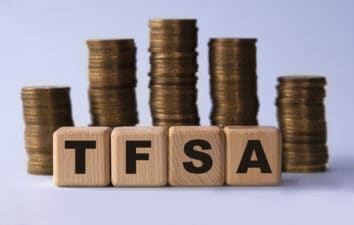If you’re new to investing, there are lots of ways to classify stocks. One is by sector—like health care versus technology. Another is by size—small caps versus large caps. But beyond sector and size, there’s also investment style, and here, the two dominant categories are growth and value.
Growth stocks are what’s been popular for years now. Think big U.S. tech names that keep outperforming expectations with strong revenue and profit growth. Value, however, is a bit more old-school. These are stocks that trade for less than what many investors think they’re worth, often based on things like low price-to-earnings or price-to-book ratios.
If you’re looking at value stocks with a long time horizon, there are two main ways to approach the space. I’ll walk you through both, share which one I prefer, and point to one exchange-traded fund (ETF) that makes it easy to put the strategy to work.
The two main ways to be value investor
The first way is stock picking. And yes, there’s some basic math involved—but what matters more is your starting point. There’s no point in buying a “cheap” company if it’s inexpensive for a good reason, like a broken business model or a shrinking industry.
That’s why quality comes first. You want to assess whether the business has a durable competitive moat. In other words, can it realistically exist 20 years from now without losing market share to competitors? Think about sectors like garbage collection or railways—industries where the structural setup makes it hard for new players to enter.
Once you’ve found a quality business, then you calculate your margin of safety. There’s no single right way to do this, but the Warren Buffett and Benjamin Graham approach is to estimate the company’s intrinsic value based on future cash flows or asset value and then only buy if the current price is meaningfully lower. It takes time to get a feel for this.
If you go this route, you’re ideally holding a concentrated portfolio of just a handful of names, each with a significant weight. You only sell when your thesis breaks or your target price is reached. It can be rewarding, but it’s a lot of work and not for the faint of heart.
The second approach is much broader. You build a diversified portfolio of 50 or more stocks that, on average, exhibit value traits. You’re not doing deep dives on every company—you’re just betting that these characteristics will, over time, deliver outperformance. The most common metrics here include low price-to-earnings and price-to-book ratios, but others, like enterprise value-to-earnings before interest, taxes, depreciation, and amortization (which adjusts for capital structure differences) and free cash flow yield, are also popular.
This approach requires less research and can be fully automated with stock screeners. The catch is that buying 50-plus individual stocks is time-consuming and impractical for most people. That’s why I prefer this route, but I outsource it through an ETF.
This Canadian value ETF is a good deal
One of the easiest ways to implement a value strategy without picking stocks yourself is through iShares Canadian Value Index ETF (TSX:XCV). This ETF tracks a portfolio of 36 holdings that make up the Dow Jones Canada Select Value Index.
As you might expect from a Canadian value fund, the portfolio leans heavily on the big three sectors: banks, energy, and mining. It also pulls double duty as a decent dividend ETF, with a 12-month trailing yield of 3.88%.
The management expense ratio is 0.55%. That means for every $10,000 you invest, you’re paying about $55 per year in fees—built into the fund’s performance, not billed directly.









